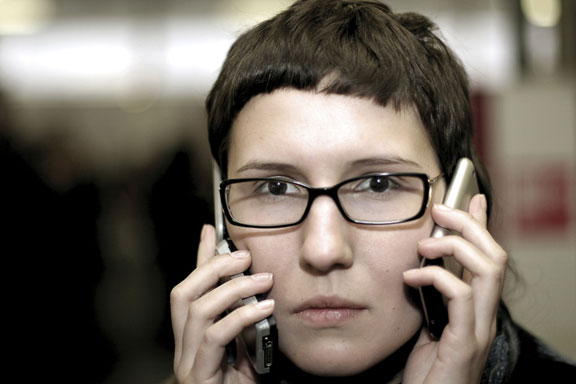 WASHINGTON – More than half of all adult Americans have accessed the internet through a mobile connection, according to a recent study by the Pew Research Center’s Internet & American Life Project. Mobile devices — laptop computers, cell phones, gaming consoles, and music and video players — are firmly entrenched in the digital age.
WASHINGTON – More than half of all adult Americans have accessed the internet through a mobile connection, according to a recent study by the Pew Research Center’s Internet & American Life Project. Mobile devices — laptop computers, cell phones, gaming consoles, and music and video players — are firmly entrenched in the digital age.
The survey, conducted in April, indicated 56 percent of American adults have accessed email, instant messaging or websites via a mobile device. Thirty-nine percent used a laptop computer; the next-largest group, at 32 percent, used cellular phones. Cell-phone Web access rose by one-third since December 2007, when only 24 percent of Americans had visited the internet on a handset.
According to the study, nearly one-fifth (19 percent) of Americans now use the mobile internet daily, up substantially from the 11 percent recorded in December 2007. That’s a growth of 73 percent in the 16 month interval between surveys.
“Mobile access strengthens the three pillars of online engagement: connecting with others, satisfying information queries and sharing content with others,” said John B. Horrigan, associate director of the Pew Internet Project and principal author of the report. “With access in their pockets, many Americans are ‘on-the-fly’ consumers and producers of digital information.”
The report, entitled “Wireless Internet Use,” also noted that African Americans are the most active users of the mobile internet. Nearly half (48 percent) of African Americans have at one time used the internet on a mobile device, and on the average day 29 percent go online with a handheld. Both figures are half again the national average. Moreover, the growth in mobile handheld online use on the average day since 2007 for African Americans is twice the national average: 141 percent for African Americans versus the 73-percent average.
“The notion of a digital divide for African Americans has some resonance when thinking about the wireline internet,” Horrigan said. “But when you introduce the mobile internet, the picture changes, and African Americans are the pace setters.”
The study also indicated a growth in a broader measure of mobile engagement, as more Americans in 2009 are turning to their handhelds for non-voice data activities. The activities probed were sending or receiving text messages, taking a picture, playing a game, checking email, accessing the internet, recording video, instant messaging, playing music, getting maps or directions and watching video.
In 2009, 69 percent of all adult Americans said they have engaged in at least one of the 10 activities versus 58 percent who admitted the pursuits in late 2007. Also in 2009, 44 percent of all adult Americans said they had done at least one of the non-voice data activities daily, up from 32 percent in 2007.
When asked to assess what mobile access means when they are away from home or work, about half of wireless users cited staying in touch with others or being able to dig for information on the go. However, some indicated mobile access allows them to share content with others as they go about their daily lives.
Among cell phone or wireless laptop users, half (50 percent) said it is very important to them to have mobile access in order to stay in touch with other people. Nearly the same share (46 percent) said mobile access is very important for getting online information on the go. One in six (17 percent) indicated mobile access is very important to them so they can share or post online content while away from home or work.
Wireless internet access using other devices, though much less common than with laptops or handhelds, has a foothold among some Americans. The April survey found that 45 percent of adults have iPods or MP3 players, and 5 percent of all adults have used those devices to go online. Forty-one percent of adults have game consoles; 9 percent of them have accessed the internet via that means. Seven percent of the 14 percent personal digital assistant owners have used those devices for online access.
Two percent of adults own an e-book reader (Kindle, Sony Reader, etc.), and 1 percent have used it to get online.
Overall, 17 percent of adults have used at least one of the four major access means to go online.
The survey’s authors interviewed 2,253 Americans, 561 of them on their cell phones.












No Comment